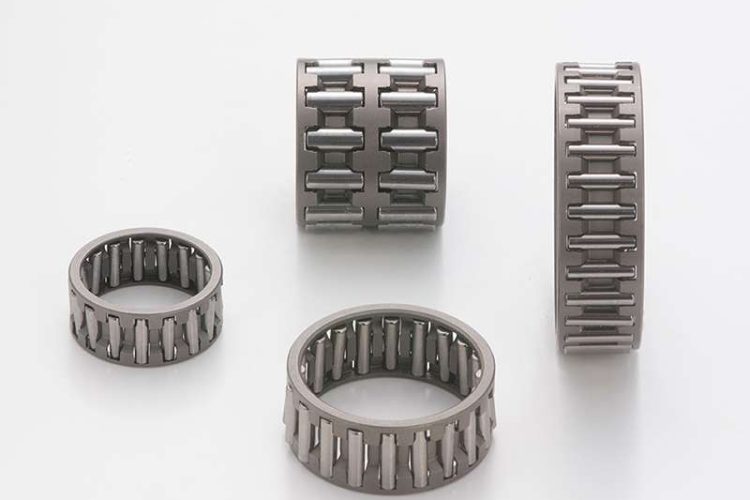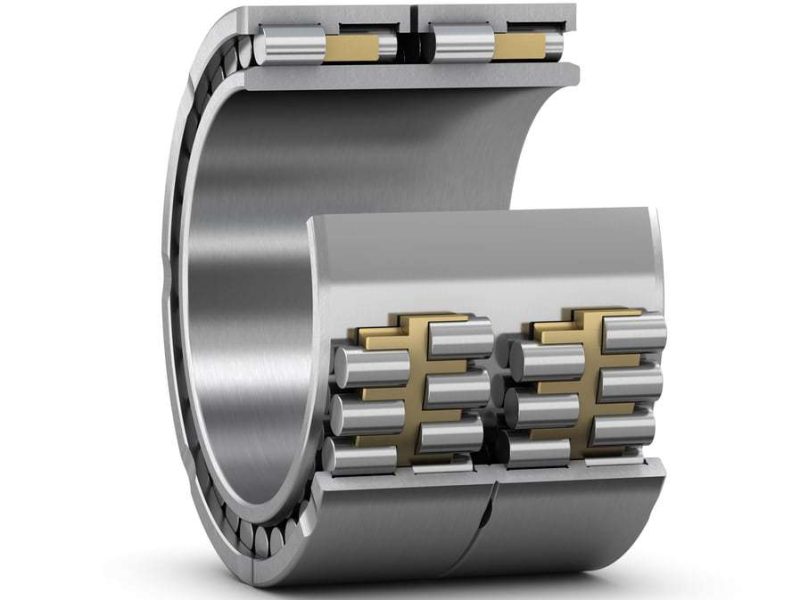Table of Contents
Categories
-
Adapter Sleeves (9)
-
Ball Bearings (11)
-
Ball Screw Bearings (2)
-
Ceramic Bearings (27)
-
Pillow Block Bearings (4)
-
Plain Bearings (32)
-
Roller Bearings (12)
-
Slewing Bearings (43)
-
Sliding Block (3)
-
Stainless Steel Bearings (27)
-
Super Precision Bearings (6)
-
Thin Section Bearings (9)
-
Track Rollers (4)
-
Universal Joints (1)
Needle Roller Bearings: Reduce Friction Between Moving Parts
Needle roller bearings, as a key industrial moving component, play an important role in reducing friction, supporting axial loads and improving motion efficiency in various mechanical systems. It uses rollers (usually needle-shaped) to replace traditional sliding contacts, effectively reducing friction between moving parts, thereby extending the life of the equipment and improving performance.
Working Principle
The working principle of needle roller bearings is based on the concept of rolling friction. Compared with sliding friction, rolling friction reduces energy loss, making the bearing perform better under high load and high speed conditions. Its core component is the roller, whose special shape helps to evenly share the load, reduce local stress, and improve the overall load-bearing capacity.
Types Of Needle Roller Bearings
- Cylindrical roller bearings: composed of cylindrical rollers that roll along the axis. The inner and outer rings are cylindrical, and the load is mainly exerted on the rollers.
- Needle roller bearings: Use slender needle rollers with small diameter and large length. Design suitable for limited space
- Combined needle roller bearings: combine the advantages of multiple needle roller bearings to provide more complex load-bearing capacity and adaptability.
- Tapered roller bearings: The rollers are conical and are suitable for bearing large loads that act in both radial and axial directions.
- Self-aligning roller bearings: The rollers are spherical and have an adjustable design to adapt to axial tilt and axial expansion.
- Orbital roller bearings: composed of rollers and tracks, suitable for high-precision and high-speed applications
- Thrust roller bearings: used to bear axial loads, can be divided into one-way and two-way thrust roller bearings.
- Small roller bearings: The rollers are small in size and suitable for small precision equipment
Applications Of Needle Roller Bearings In Industry
Needle roller bearings play multiple key roles in industry. Its superior design and performance make it widely used in automobile manufacturing, machinery manufacturing, aerospace, power industry, food processing and packaging, steel and metallurgy, railway transportation, medical equipment, electronic manufacturing, agricultural machinery and other fields. By reducing friction, improving efficiency, withstanding large loads and adapting to various industrial environments, needle roller bearings make important contributions to the reliability, durability and performance of industrial equipment.
How To Reduce Friction Between Moving Parts
- Rolling friction mechanism
Needle roller bearings adopt a rolling friction mechanism. Compared with traditional sliding friction, the key lies in the rolling motion of the rollers. The rollers roll along the axis inside the bearing rather than sliding. This rolling friction method greatly reduces the actual contact area with the bearing contact surface, thereby reducing frictional resistance.
- Uniformity of load sharing
The design of needle roller bearings distributes the load evenly between the rollers through the layout and trajectory of the rollers. Compared with sliding friction, this uniform load distribution reduces local stress, helps reduce friction and reduces energy loss.
- Special shape of roller:
The rollers in needle roller bearings usually have a special shape of cylindrical, tapered or needle-shaped. This special shape helps reduce the actual point of contact with the inner and outer rings, thereby reducing friction. This design reduces friction more effectively, especially at high loads and speeds.
- Application of high quality materials
Needle roller bearings usually use high-quality materials, such as high-quality alloy steel or ceramic materials. These materials have excellent hardness and surface smoothness, which help reduce friction and improve wear resistance, thereby extending bearing life.
- Selection and application of lubricant
Proper lubricant selection and application is critical to reducing friction. Needle roller bearings usually use high-efficiency lubricants such as grease or bearing oil. These lubricants can form a thin lubricating film on the roller and bearing surfaces, reducing friction between the surfaces.
- Precision manufacturing process
The manufacturing process of needle roller bearings adopts high-precision technology to ensure the precise size and shape of each part inside the bearing. This helps ensure an accurate match of the rollers and inner and outer rings, minimizing gaps between the bearing components and thus reducing friction.
Needle roller bearings successfully reduce friction between moving parts by using a rolling friction mechanism, even load sharing, specially shaped roller designs, and a combination of high-quality materials and precision manufacturing processes. This design not only improves efficiency and extends equipment life, but also demonstrates excellent performance in industrial applications and becomes a key component in various mechanical systems.
References
5. More information about “needle roller bearings” from SKF Bearings.
1.”Needle roller bearing” from NSK ;
4. About”Tapered roller bearing” from Wikipedia ;





















